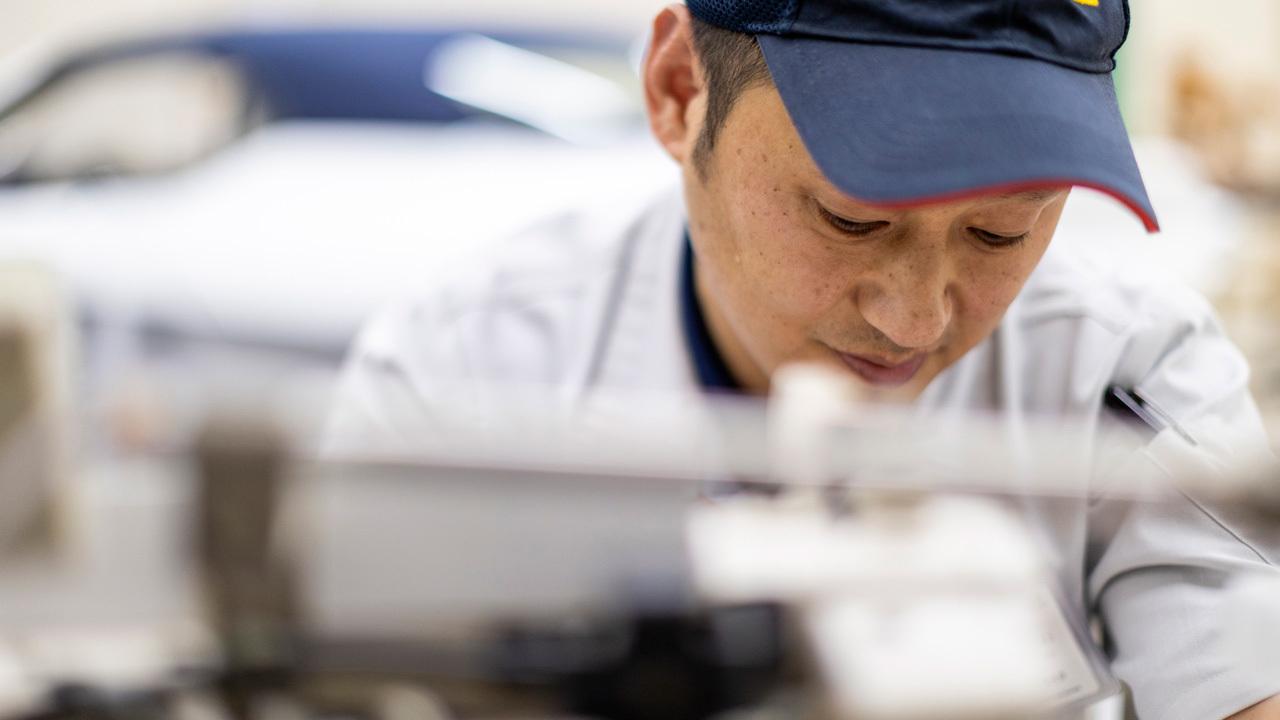
This two-part article features Shingo Yamashita, a multi-modeling master who creates authentic interior designs with unique skill at achieving superlative tactile experiences.

While many people focus on advanced technologies such as 3D printing or AI when thinking about innovation, much of the work involved in car manufacturing is still done by hand.
In this series, by interviewing some of the masters supporting Toyota’s manufacturing with their craftsmanship, Toyota Times uncovers the essence and core strength built on traditional Japanese monozukuri (making things).
This is part two of our interview with a master of interior design, multi-modeler Shingo Yamashita.
Series #8 - Master multi-modeler Shingo Yamashita turns designers’ visions into reality
Senior Expert, Interior Model Creation Section, Design Management Division, Vehicle Development Center at Toyota Motor Corporation
A hand in everything from material selection to sewing
Multi-modeler Shingo Yamashita's workshop is in a design studio in Toyota City, Aichi. This workshop is home to the full-scale Lexus LC Convertible interior mockup as introduced in part one of this series. That mockup’s finishing is so detailed, anyone led into the driver’s seat blindfolded then asked to open their eyes would likely think they were in an actual car.
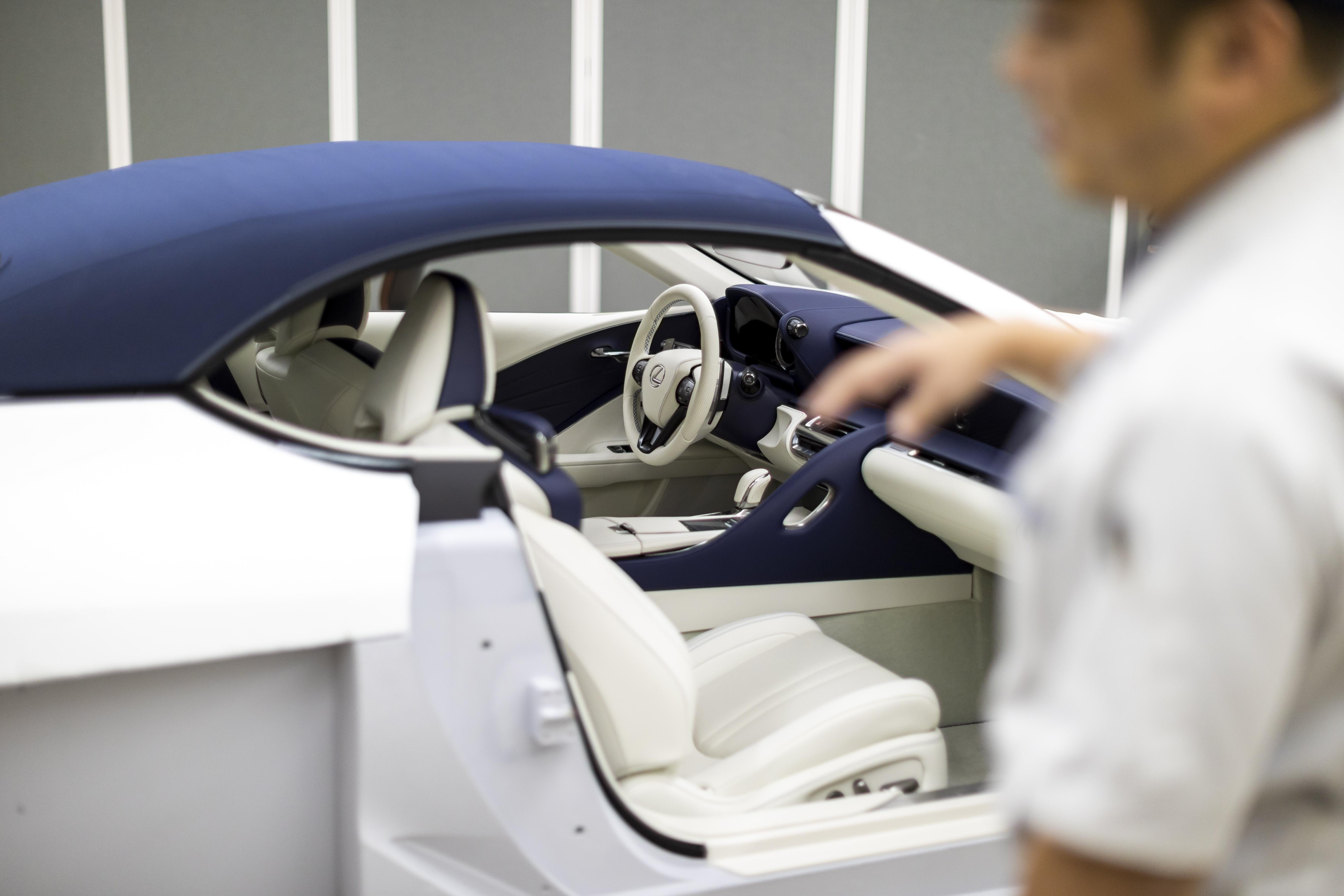
There is a workbench with an industrial sewing machine standing behind the mockup. This is Yamashita’s workspace, and he offers a demonstration of how he crafts a leather steering wheel cover. Yamashita, who is rigorous about everything from materials to techniques, channels his unique expertise and ingenuity into the task.
Normally, tasks like leather sewing are outsourced to specialized craftspeople or manufacturers. Some 13 years ago, however, while in charge of interior design for the Prado, Yamashita took it upon himself to meet a designer’s request for a genuine leather steering wheel that was comfortable to grip. “I never imagined I’d be doing this at a car company,” says Yamashita, who worked on everything from molding a comfortable shape to the leather material selection and sophisticated sewing.
“For the Prado, I went through a process of trial and error to figure out which of the synthetic leathers available could make something that looked genuine and created a steering wheel that was comfortable to grip.”
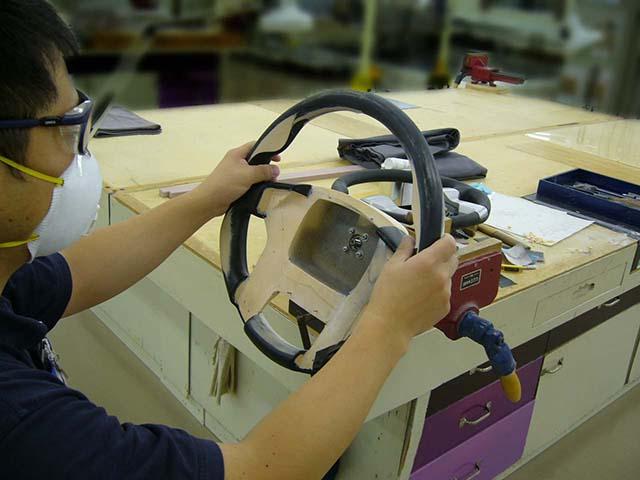
About a decade ago, Yamashita was also tasked with producing mockups for the Harrier, with a design concept focused on the rugged appearance of thick leather. He created models in cooperation with the project staff, sharing his knowledge of leather and production techniques.
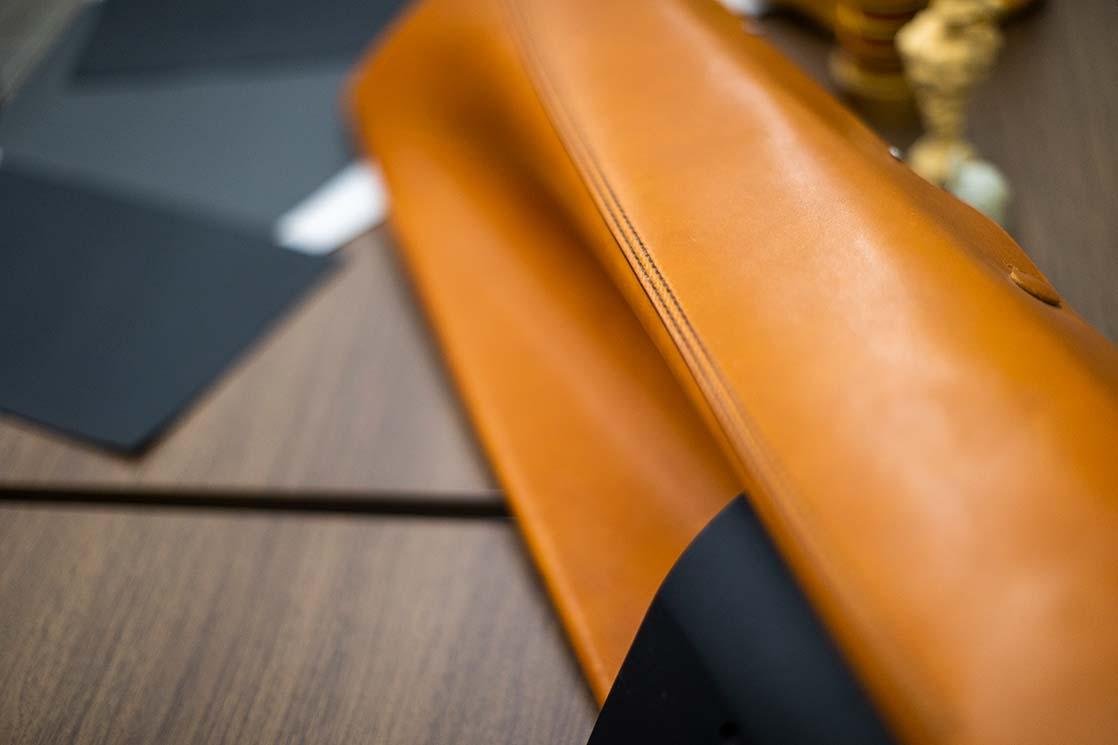
While certain models feature genuine leather, Toyota’s high-volume car production calls for the use of synthetic materials, such as PVC leather, in consideration of cost, durability, and quality control. These synthetic leathers offer a variety of textures and features, at times superior to genuine leather.
The synthetic leather selected for steering parts is wrapped and sewn by hand. Yamashita shares memories of that time during his demonstration, as his hands move like those of a seasoned leather craftsperson precisely sewing the seam with uniform, evenly spaced stitches.
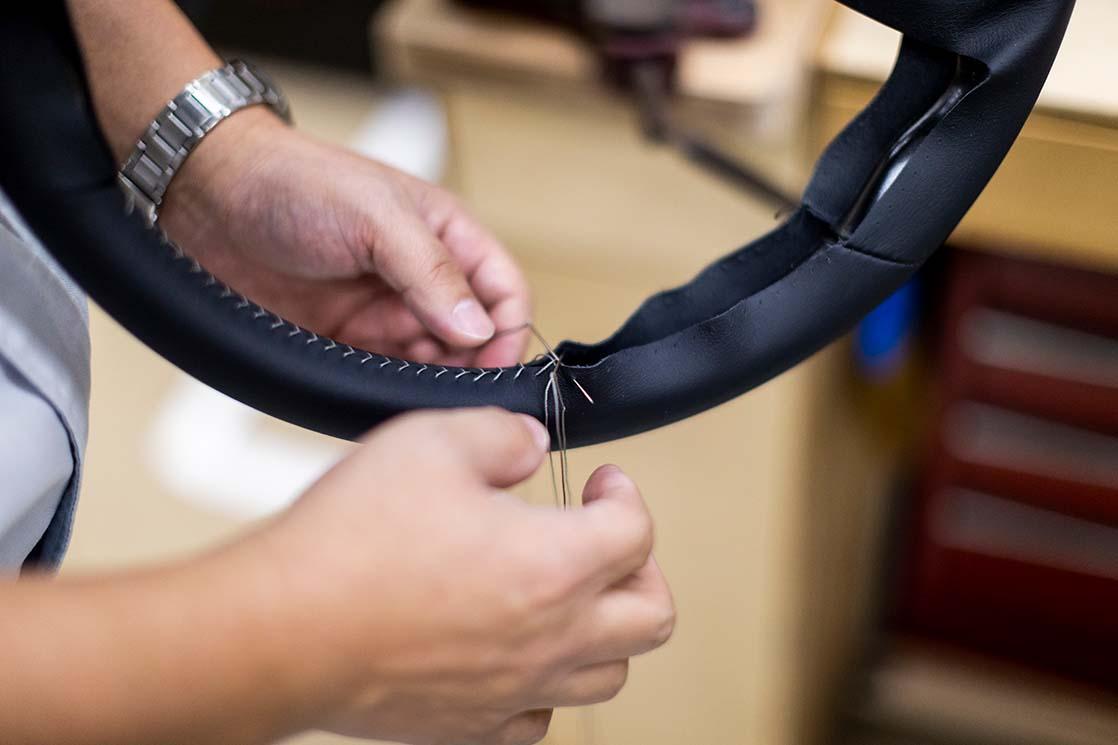
“The technique I finally arrived at for creating the look of genuine leather involves adjusting the curvature of the steering wheel’s cross-section.”
A car steering wheel is a composite structure with a metal core of iron, aluminum, or magnesium, which provides the required rigidity and strength, which is then covered in resin, leather, or other soft materials. At it directly affects safety as part of the vehicle’s control system, the steering wheel must also follow legally mandated specifications.
Initially, Yamashita tried to achieve the cross-sectional shape he envisioned using highly malleable clay.
“The problem is that clay feels soft, so you can’t get a proper firm grip. Our hands are very sensitive. Instead, I experimented with carving resin to achieve the cross-sectional shape I had in mind.”
Differences in stitching style also have a significant impact on appearance. Yamashita says that he aims for elegant stitch lines that feel pleasant to the touch while also offering outstanding functionality.
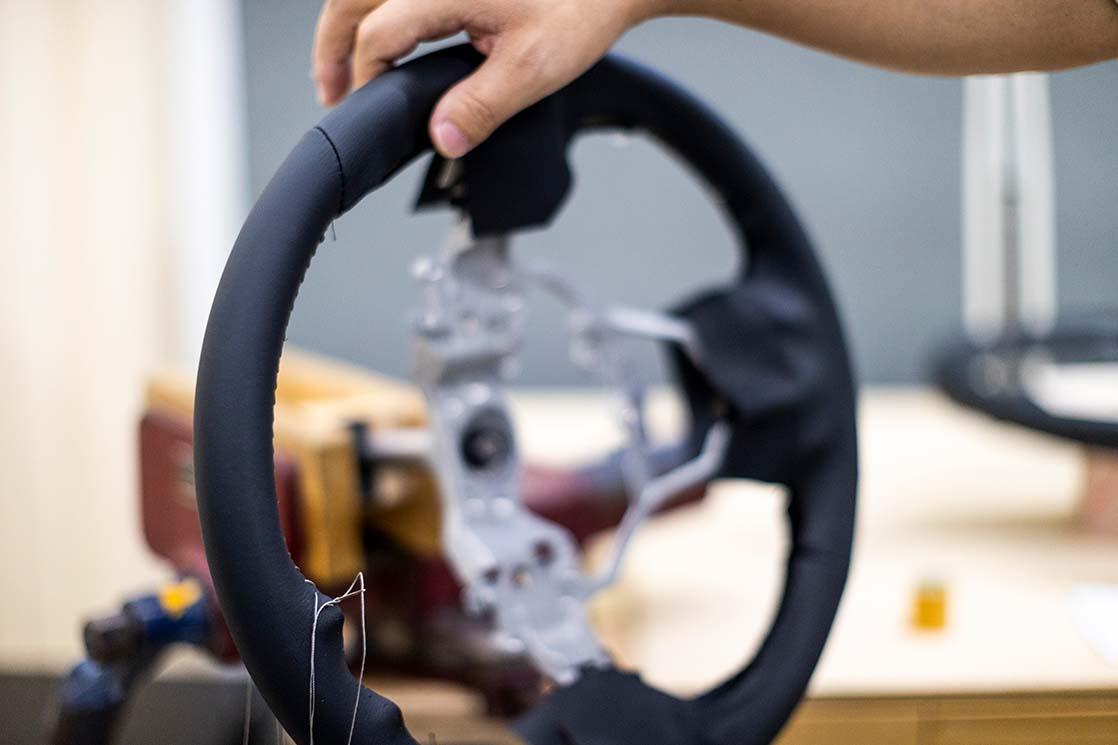
Dedication to the designer’s vision, down to the textures and edges
Yamashita leads the high-quality production of all other interior components except for the seats, from instrument and meter cluster panels to center consoles and door trims.
Luxury car interiors feature extensive leather upholstery. These upholstered components consist of leather material fitted over a resin base, a process that is partially automated for production cars. For prototypes, however, of course everything is done by hand. The more complex the shape, the more difficult the task.
“Designers and other members of the design team sometimes watch the process. They might say things like, ‘I want it tighter here’ or ‘Can you make it look sharper?’ All designers express themselves differently, so we must think about who they are, what they’re after, and how we can get closer to those goals.”
Achieving intended designs in leather upholstery involves adjusting the base shape, the amount of foam or other cushioning material under the leather, as well as the way the leather is wrapped or fitted. Several layers of the leather material may even be sewn together.
“Materials play a big part in creating a genuine leather look. The way we wrap the leather material, or the amount of cushioning foam we put inside, can also greatly affect the shape and appearance of the edges of interior components. Just using a thick material won’t necessarily make something look thicker.”
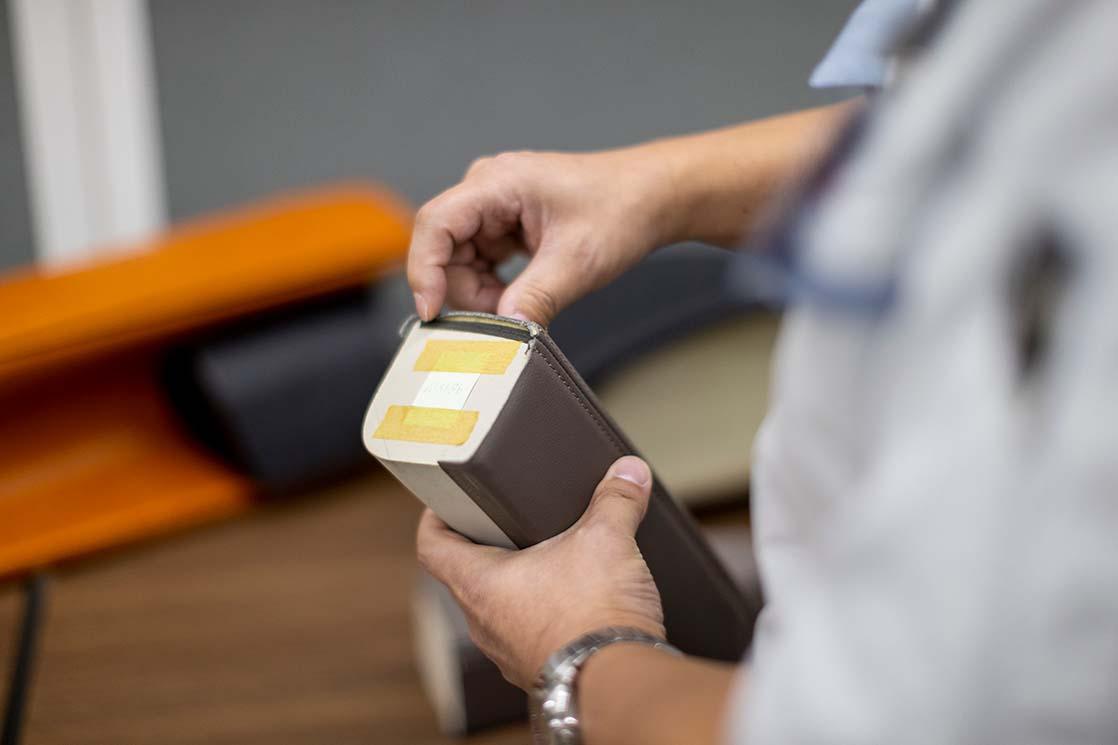
A common request from designers is to give the instrument cluster panel or console harder, sharper edges. However, there are legal requirements for rounding the interior edges for safety reasons. Yamashita still managed to come up with unique ways of achieving a hard and sharp appearance, even with rounded edges, through creative use of material thicknesses and cushioning.
Yamashita also demonstrated the process of stitching together several pieces of leather material with his industrial sewing machine. Like so much else, these sewing techniques were something he learned on his own. Sewing precise seams on leather, which is much stiffer than cloth, is very difficult. Some designers also want the stitching to feature an ornamental design aspect.
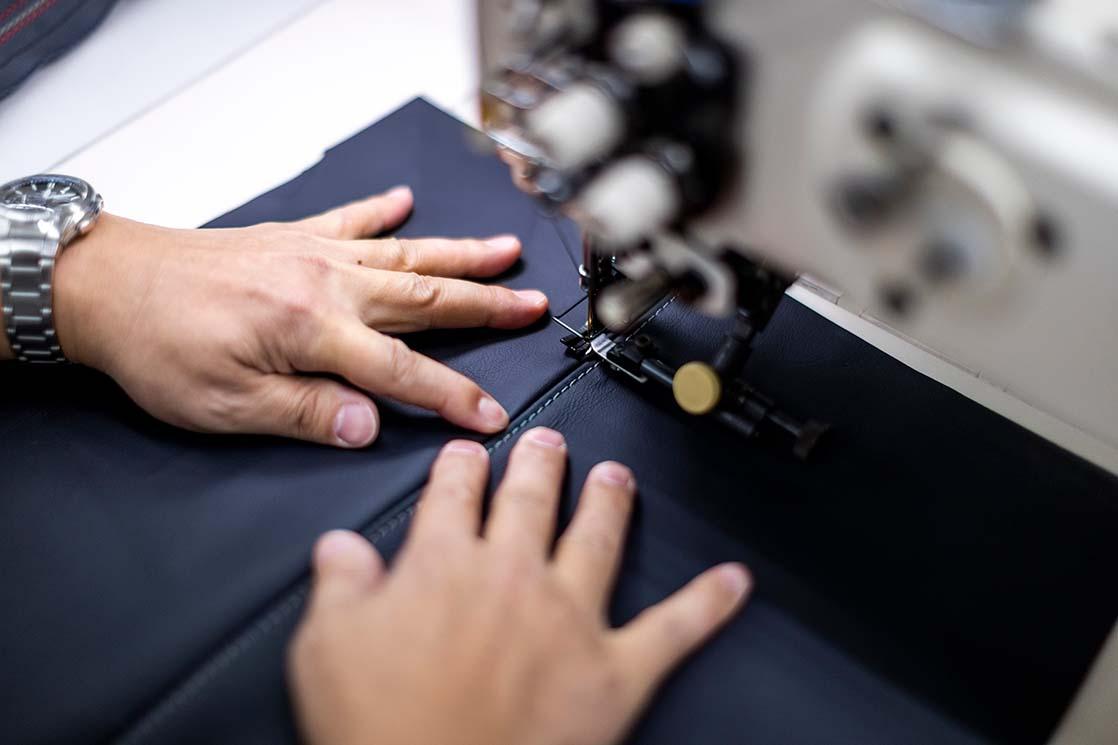
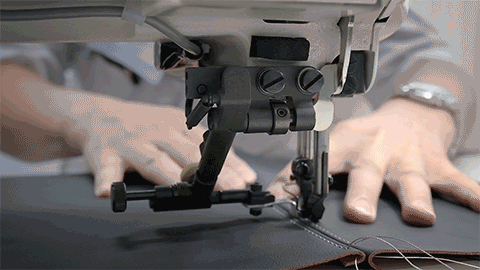
How does Yamashita translate the interior design of his full-scale mockups into production vehicles? At times he works with production staff to figure out the necessary methods, refining the hand-finished designs and processes to ensure they can be replicated efficiently and at low cost using machinery.
It has become increasingly important to have the knowledge, experience, unique expertise, and skills of a multi-modeler like Yamashita, who can shift seamlessly between working with his hands and digital technologies.
Ensuring the survival of unique skills and expertise
Yamashita’s biggest challenge now is nurturing young talent to follow in his footsteps as masters of both digital and manual techniques.
Meanwhile, Toyota continues to seek new ways to create products and vehicles. The company’s challenge is to bridge the gap between prototypes and production vehicles.
At the same time, new car development periods are becoming increasingly shorter. Toyota is looking to meet this challenge by using digital technology, sharing information and expertise, and promoting closer communication between each task group.
Yet, digital solutions can only go so far. Ultimately, interior design is not complete without the handiwork of modelers like Yamashita, as final decisions rely on realistic models.
According to Yamashita, passing on manual skills is particularly difficult.
“Younger generations work with digital tools from the outset, meaning they have drastically fewer opportunities to work with their hands than in the past. That’s why they struggle to cultivate the skills necessary for manual work.”
The process of upholstering leather by hand requires constant awareness of how the leather can be stretched to achieve the best results.
“The objects we cover differ every time, so while working you need to think about how to stretch the leather to ensure a good fit. That’s not something you can learn from a manual, making it hard to teach. We learn best by failing, but these days it’s difficult to even be given the time to fail.”
Tasks with tight deadlines are inevitably passed to skilled veterans, hindering the transfer of skills to less-experienced colleagues.
“We must make good use of digital technology, which is evolving daily. In the past, complex three-dimensional objects could only be molded using cloth, but recently it has become possible to create even development diagrams using 3D-CAD. From here on, it’s about optimizing monozukuri through a combination of traditional skills, using tools like wooden molds and cutting-edge digital technology. That will be the key.”
The use of recycled materials is also likely to become increasingly common as automobiles pursue carbon neutrality, presenting another challenge for Yamashita.
“Besides mastering a wide range of skills, multi-modelers will also need versatile creativity, a constructive mindset, and a keen aesthetic sensibility. But each person has their own way of developing aesthetics, so it’s not something that can be passed down.”
Within Toyota, Shingo Yamashita is a multi-modeler like no other, relied upon for tasks that no one else can handle. Yamashita continues to take on the challenge, with the added difficulty of training a new generation to ensure a bright future for car-making.
(Text: Yasuhito Shibuya, photo: Akira Maeda)

